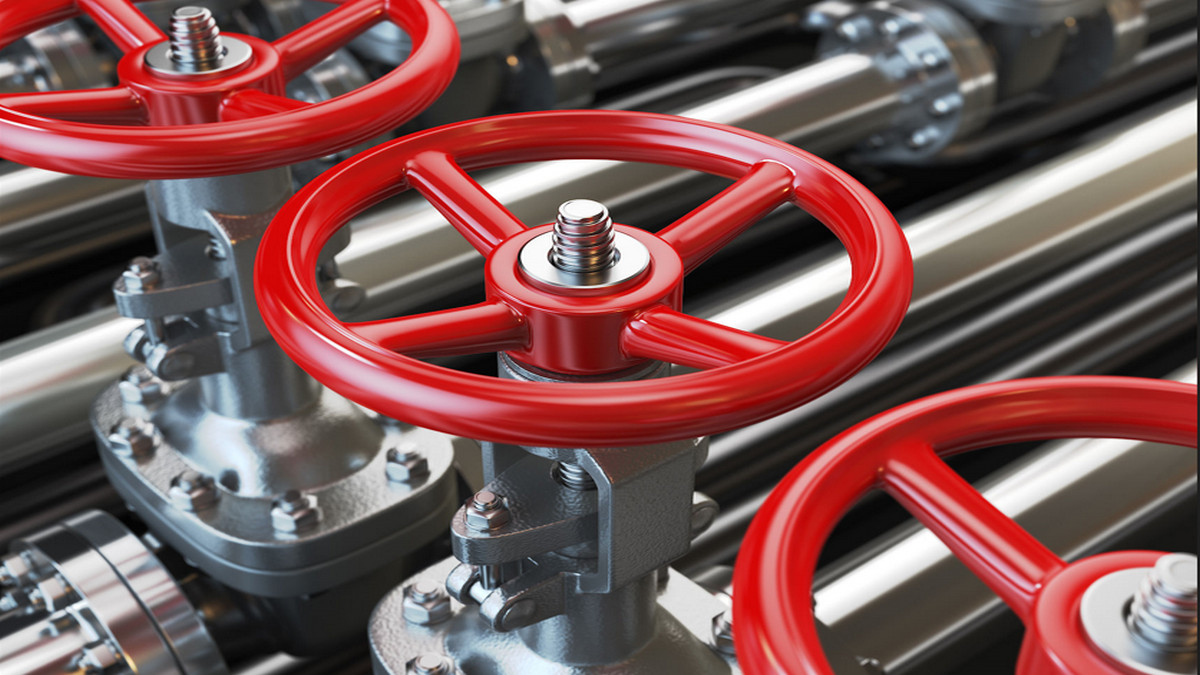The valve is an important adjustment device used in fluid transportation systems. It can turn the flow on or off and control the rate and direction of flow of the fluid. There are many types and specifications of valves, with various work requirements. The working principles, advantages and disadvantages of five common types of valves are described is this article.
Valves are used to control the flow of fluids in a conveying system. They control the cut-off, flow rate, diversion, backflow, or pressure relief of fluids. Valves used in fluid control systems, from the simplest shut-off valve to various valves used in extremely complex automatic control systems, have a wide variety of specifications. Valves can be used to control the flow of various types of fluids such as air, water, steam, corrosive medias, mud, oil, liquid metal and radioactive media.
Ball Valve
A ball valve is a common type of valve which uses a hollow ball that pivots in a housing to control the fluid flowing through it. The ball is connected to a handle which controls the position of the ball in the housing. When the ball's hole is in line with the flow, the fluid can flow through the hollowed center of the ball. When the ball’s hollow center is pivoted 90-degrees to the flow, it blocks the flow of the fluid.
The ball valve seat can be made of suitable material to meet the needs of the working conditions. It is widely used because of its good sealing performance, simple structure and easy operation and maintenance.
Advantages:
- High sealing performance
- Low resistance of straight-through flow path
- Wide range of caliber sizes
- Can be used for porous applications such as 3-way ball valves
Disadvantages:
- Metal spheres are expensive to manufacture
- When the fluid contains impurities or large particles, the ball and seat are easily damaged
Globe Valve
Globe valves are named because of the shape of the housing which resembles a ball or globe. Inside the valve is a valve plate or plug connected to a stem. The stem pushes the plug into an internal seat to close off the flow of fluid. When the stem pulls the plug away from the seat, the fluid can flow. Because the flow channel in the valve body is S-shaped, when the fluid passes through the valve, the flow direction will be changed, increasing the resistance and reducing the fluid pressure.
Advantages:
- Small working stroke and short opening and closing time
- Excellent fluid shut-off and flow control capabilities
- Low friction on the sealing surface and high durability
Disadvantages:
- Fluid pressure is reduced by resistance
- High force required for valve operation
- Not suitable for sediments and viscous fluids
Gate Valve
A gate valve, also known as a sluice valve, is a valve that opens by opening or closing a plate barrier in the path of the fluid. A rod is connected to the plate to drive the gate into or out of the channel that the fluid is flowing through. One disadvantage of the gate valve is that when the gate is half-opened, the fluid impacting the gate will easily cause the valve seat to vibrate and be damaged, so it is not suitable for throttling use. It is only suitable for fully open or fully closed conditions.
Advantages:
- Compact size
- Low resistance to straight-through flow path
- The fluid is perpendicular to the gate, requiring less force to open and close
Disadvantages:
- Applicable only when fully open or fully closed
- The gate travel is high, requiring a clear space above the valve for operation
- Takes longer to open and close
Check Valve
Also known as a one-way valve, as the name implies, only allows fluid to flow in one direction. When fluid is flowing in the required direction, the pressure of the fluid opens a flap in the valve to allow the flow to be unobstructed. On the contrary, when the fluid pressure comes from the reverse direction, the back pressure pushes the valve flap against a seat to close the valve, preventing backflow.
Advantages:
- Simple structure, easy to operate and maintain
- Prevents fluid backflow and maintains unidirectional flow
Disadvantages:
- Pay attention to fluid direction during installation
- If the back pressure is too low, the cut-off capability may be affected
- Instantaneous opening and closing may damage the valve flap
Butterfly Valve
The butterfly valve has a flat circular plate that rotates inside a housing. When the face of the plate is in line with the flow direction, the fluid can flow through the valve. When the plate is turned perpendicular to the flow, it will stop the flow of the fluid. Butterfly valves can be divided into elastic seal and metal seal. The elastic seal uses a rubber ring to prevent leakage and has good low pressure sealing performance, but the rubber ring has limitations on temperature and pressure. The metal plate has direct contact with the metal housing surface. It has a higher working temperature and pressure range.
Advantages:
- Simple construction and easy installation
- Smaller in volume and weight than other valves of the same size
- Large flow diameter and low resistance
Disadvantages:
- Large flow diameter, not suitable for accurate flow control
- Gaskets are susceptible to operating temperature and pressure







.png)






